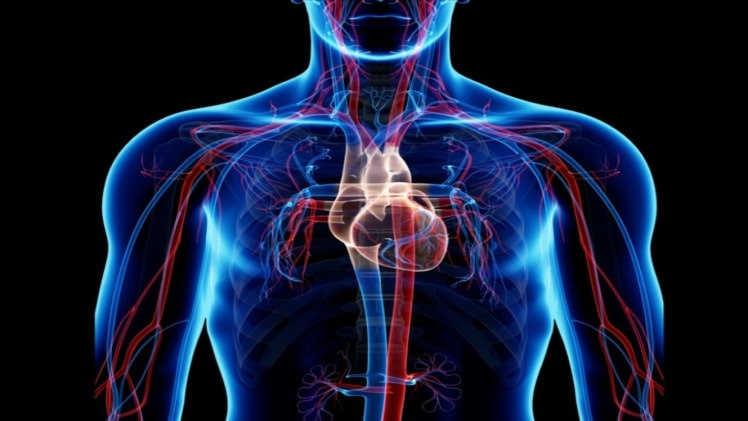The blood circulatory system is a collection of organs such as the heart, blood vessels and blood that help in the circulation of oxygen and nutrients throughout the body in humans and other vertebrates.
Invertebrates have an open system of circulation where blood travels more freely, irrespective of the tissues or areas it is flowing in. The circulatory system in vertebrates can be divided into two, namely – system circulation and pulmonary circulation. This system of circulation is referred to as a closed system. The human heart consists of two auricles and two ventricles along with a network of blood vessels that help in the transport of blood. Let us look at each component in detail.
Components of Circulatory System
Blood
Blood is a red-coloured fluid that transports oxygen and nutrients to and from the heart with the help of blood vessels. It is composed of blood cells (RBCs and WBCs) and platelets. The red blood cells (RBCs) are the most abundant ones, and they contain an iron-rich protein called haemoglobin that has a binding capacity for oxygen and hence helps in the transport of oxygen. This iron-rich haemoglobin protein gives a red colour to the blood.
The blood cells are suspended in a straw-coloured liquid called plasma. It occupies about 55% of the blood volume. The major functions of blood include the transport of oxygen to all the tissues in the body, transport of glucose, fatty acids and amino acids in the body, removal of waste products such as urea and carbon dioxide, protecting the body against antibodies, transporting hormones and reporting tissue damage if present, coagulation of blood and maintaining core body temperature.
Blood vessels
Blood vessels are the components of the circulatory system through which blood is transported to all the parts of the body. They transport nutrients and oxygen to all the tissues of the body and also help in eliminating the waste products away from the tissues.
There are five major types of blood vessels found, and they are arteries, arterioles, capillaries, venules and veins. The arteries carry oxygenated blood away from the heart to bodily tissues. The arterioles are small diameter blood vessels that extend from the artery and join into capillaries. The capillaries are the site of the exchange of water and chemicals between the blood and tissue. The veins carry deoxygenated blood away from the tissues to the heart, and the venules are smaller vessels that drain the blood into larger vessels from the capillary beds.
The heart
The heart is a muscular fist-sized organ that is present on the left side of our chest. It is also called the pumping organ of the body. It pumps blood throughout the body to deliver oxygen and nutrients and also carries carbon dioxide and other metabolic wastes to the lungs.
The heart is enclosed in a sac-like structure called the pericardium. The heart wall is made up of three layers, namely – the endocardium, myocardium and epicardium. Apart from the four chambers, to restrict and maintain the flow of blood in one direction, the heart contains four valves – a bicuspid valve, a tricuspid valve and two semilunar valves.
Design of the Circulatory System
The blood flows in the circulatory system in a fixed manner. The left auricle and the left ventricle together consist of the left heart, and the right auricle and right ventricle are together called the right heart. A simple heart diagram can be made to understand the flow of blood through these chambers. The arteries, except the pulmonary artery, carry oxygenated blood to the entire body. The veins, except the pulmonary vein, carry deoxygenated blood back to the heart.
The pulmonary artery carries deoxygenated blood to the lung for oxygenation, and the oxygenated blood is carried back to the heart via the pulmonary vein; this is the pulmonary circulation of the circulatory system.
The systemic circulation of the heart is the transport of oxygen-rich blood from the left ventricles via the aorta to all the body parts and the return of oxygen-depleted blood back to the heart. Thus, the circulation of blood in the heart can be understood as the transport of blood from the left ventricles to the body and bringing the deoxygenated blood back to the right ventricles to be transported to the lungs for reoxygenation.
Stay tuned with BYJU’S for more interesting topics.
Visit here : zonepage.net
Click here : zeepost.org
Visit this site : f95zoneusa.org

